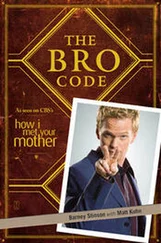Meanwhile, my grandmother was hidden separately. But eventually she was discovered, arrested, and imprisoned in a Nazi concentration camp. She was one of the lucky ones; she was liberated at the end of the war. When my mother and grandmother were finally reunited in a Red Cross displaced persons camp, they pieced together the terrible truth: nearly all the rest of their family had perished.
You can imagine how living through such experiences would change your attitude and behaviors about the world. My grandmother lived the rest of her life vacillating between shell shock and rage. She could not move beyond her past. Yet she also served as the matriarch and head of our family—the person responsible for steering the rest of us and influencing our decisions.
I view my grandmother with compassion and can entirely understand why she behaved the way she did. However, no matter how much I loved her, there's no question that she was my first exposure to toxic leadership.
Ever since, in my personal and professional life, I've been driven to understand what actions:
Produce or destroy trust
Improve or stifle communication
Build bridges or walls
Create engagement or apathy
Create high performance or high dysfunction
Each person in an organization carries his or her own history. In working with clients and learning their stories, I've seen patterns emerge—specifically, patterns in behavior. I've seen how these behaviors are reinforced by leaders and solidify into a company's culture. This culture would then in turn influence interactions each employee would have with coworkers, colleagues, and customers. This translates into the experience of “what it's like to work here.” Although these forces are invisible, they impact on everything around them.
I've watched countless leaders struggle, waylaid by the same behavioral traps over and over. Try as they might, they can't get out of the story and solve these problems on their own.
But every so often, I meet a leader who, like Neo in The Matrix , sees through the complexity and gets what leadership is all about. Matt was such a leader.
Matt was a district manager (DM) for a global fast-food restaurant chain. He'd been with the company for 23 years, and he was not just a DM. He was the DM. That is, he was the number-1 top-ranked and -performing DM in the entire company for the past two years running. Out of 100 leaders, he was at the top of the chart.
That “chart,” by the way, is no mere metaphor. In Matt's company, every DM knew how they ranked— daily —on a “hot list” (a battery of performance measures) against their peers. These metrics included the following:
Revenue per store
Cost of goods
Customer satisfaction
Drive-thru wait times
Employee retention
Matt wasn't always number 1—or even close. For years, he ranked in the bottom half of the hot list. Something had changed in Matt, and I needed to find out what it was.
It's been said that “success leaves clues.” Matt was a potential role model for his 100 peers. I wanted to make sure they'd learn what he already knew. I asked Matt, “What do you do now as a leader that helped you to become number 1? What is it that your peers in the middle and bottom of the pack aren't doing?”
That question was no accident. A key to leadership development is to focus on behavior—what you say and what you do. He replied,
Every single DM has got a lot to do. Each one of us is managing 8 to 10 stores. With all the numbers on the hot list, it's easy to focus on what's not measuring up and be in constant fix-it task mode.
That's what I did when I started, I'd hustle from store to store in task mode. I'd come in and look for what was broken and instantly try to fix it. I thought that was my job as “the big boss.”
What I've learned is that people don't appreciate me breathing down their necks. They don't want a fixer: they want a leader.
I've been doing this for a long time now. Over the years, I've realized that the key to making the numbers is to stop focusing on the numbers. My job is to focus on the people—because it's the people who make the numbers.
When I first started out, I used to walk past people on the restaurant floor, and I didn't really pay attention to them. I just saw them as worker bees. Then, when they'd up and quit, I had no idea why. I was totally clueless. They might have been really upset or unhappy, and I would have completely missed it.
The key to all of it is making people your priority. If you do that, not only will your results improve, your life will get a whole lot less stressful.
Everything Matt said made sense. But it wasn't enough. It was positive, but vague, like a feel-good, self-help book. He wasn't sharing the specifics of what he said or did that made the difference. During a pause, I jumped in to probe deeper, revisiting his point about focusing on the people. “When you're focused on them,” I inquired, “what is it that you say and do?”
Matt stopped for a moment and took a big breath. He replied,
When I come into the store, I spend time with my people and ask them about their lives outside of work. I really listen to what they say, because how they answer tells me what's important to them, whether that's their kids, or a sports team, or whatever. Then, the next time I come in, I can start the conversation by asking about that topic, and we bond over it. By starting there, the team knows I care about them. Then, I listen to what's been going on in the store, and together we figure out ways to solve their issues.
I'd hit pay-dirt. Matt had shared his strategy for success. It was simple, clear, and replicable. I almost had what I needed to teach the other DMs how to do what he did. We weren't quite yet done.
From experience, I knew that just giving a list of to-dos to the other DMs wouldn't be enough. They also needed to learn the pitfalls they would face as they tried their hand with these new skills. Matt's road to the top of the chart hadn't been a straight line—he'd had his share of bumps along the way. Matt was happy to share his stumbling blocks. He explained what seeing employees as “worker bees” really meant behaviorally, and he went on to share other failures that, with time and reflection, had become lessons.
If you talk to cryptologists—people who crack codes for a living—one of the first things they'll tell you is that code breaking can be frustrating work. It's filled with wrong turns and mistakes, trial and error. You've got to be in it for the long haul. Calmness and patience are highly advised.
By picking up this book and reading this far, it's clear that you don't want to settle for being in the mediocre majority. You're genuinely interested in leading people well. You want to understand human behavior and how it affects high performance. You want insights so you can know what makes people tick and tools so you can help them tick better.
Most people spend their careers working in, at most, just a handful of organizations. They tend to rely on, know, and learn what they see firsthand. My professional career has been a gift. It's rare to get to work in hundreds of organizations in the span of just one career. I've been lucky enough to gain inside access to thousands of leadership experiences, and I'm delighted to get to share these lessons with you.
Let's begin by looking back at an epic failure that taught me a tremendous amount about the basics of leadership. Though it happened in 1999, that fiasco has been etched in my memory—in great part because it was all my own doing.
Every traveler knows that the trip goes a lot better if you have an excellent map. A great map provides a clear big picture while still offering the appropriate amount of specific details. It clearly demarks boundaries so you can easily identify where you are and where you want to go. The journey of leadership development works the same way. The goal of this book is to serve as such a map. The concepts and tools that you learn will help you lead more effectively. You'll be able to multiply your influence and impact. As such, you'll accomplish more things in less time.
Читать дальше












